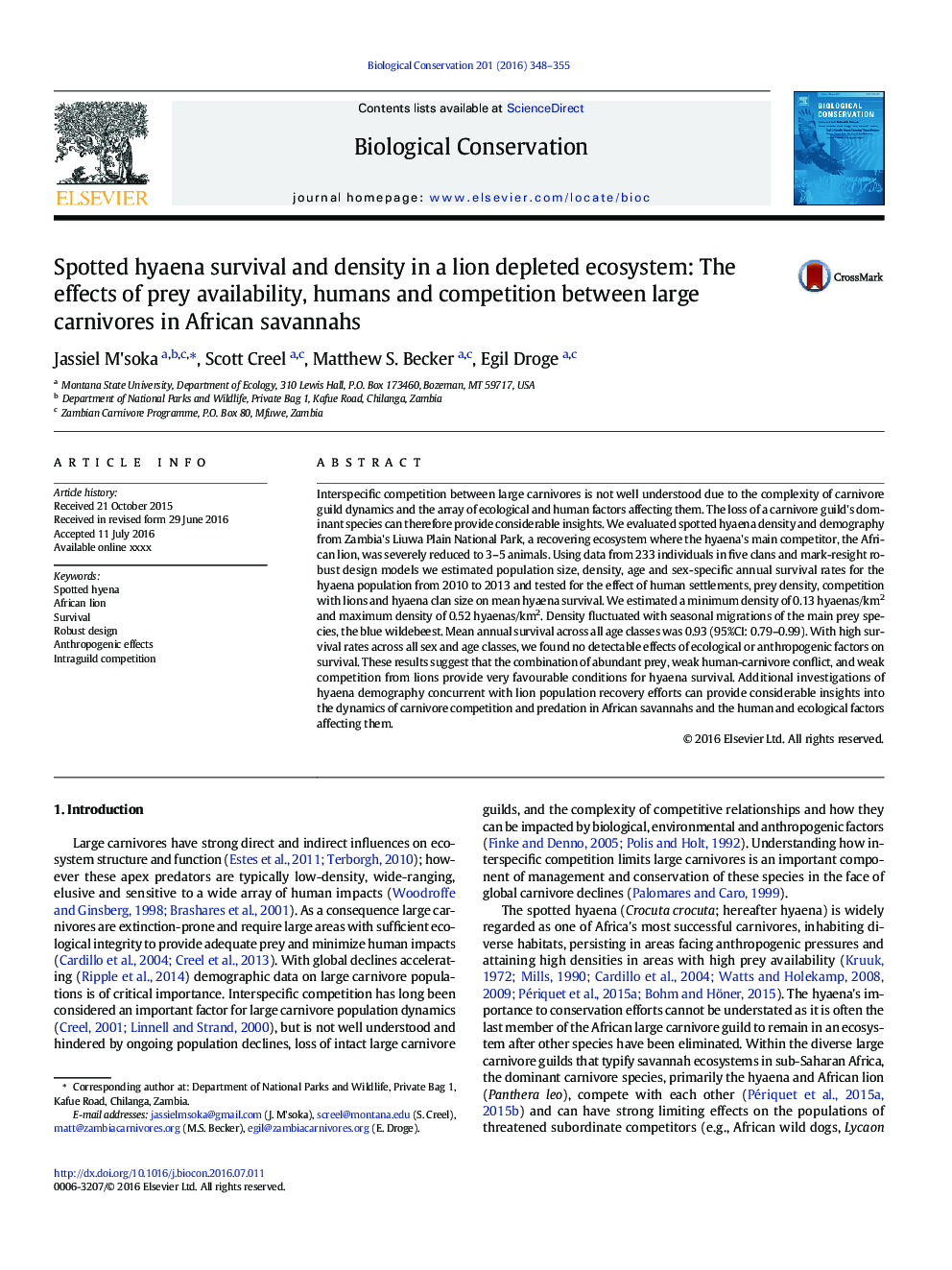| Article ID | Journal | Published Year | Pages | File Type |
|---|---|---|---|---|
| 6298234 | Biological Conservation | 2016 | 8 Pages |
Abstract
Interspecific competition between large carnivores is not well understood due to the complexity of carnivore guild dynamics and the array of ecological and human factors affecting them. The loss of a carnivore guild's dominant species can therefore provide considerable insights. We evaluated spotted hyaena density and demography from Zambia's Liuwa Plain National Park, a recovering ecosystem where the hyaena's main competitor, the African lion, was severely reduced to 3-5 animals. Using data from 233 individuals in five clans and mark-resight robust design models we estimated population size, density, age and sex-specific annual survival rates for the hyaena population from 2010 to 2013 and tested for the effect of human settlements, prey density, competition with lions and hyaena clan size on mean hyaena survival. We estimated a minimum density of 0.13 hyaenas/km2 and maximum density of 0.52 hyaenas/km2. Density fluctuated with seasonal migrations of the main prey species, the blue wildebeest. Mean annual survival across all age classes was 0.93 (95%CI: 0.79-0.99). With high survival rates across all sex and age classes, we found no detectable effects of ecological or anthropogenic factors on survival. These results suggest that the combination of abundant prey, weak human-carnivore conflict, and weak competition from lions provide very favourable conditions for hyaena survival. Additional investigations of hyaena demography concurrent with lion population recovery efforts can provide considerable insights into the dynamics of carnivore competition and predation in African savannahs and the human and ecological factors affecting them.
Related Topics
Life Sciences
Agricultural and Biological Sciences
Ecology, Evolution, Behavior and Systematics
Authors
Jassiel M'soka, Scott Creel, Matthew S. Becker, Egil Droge,
